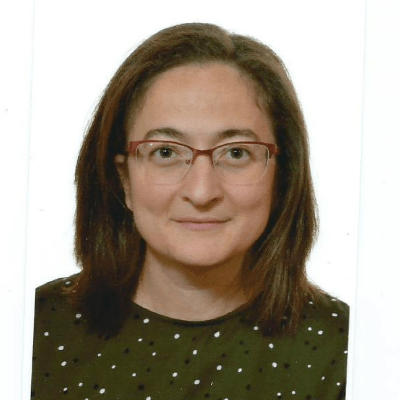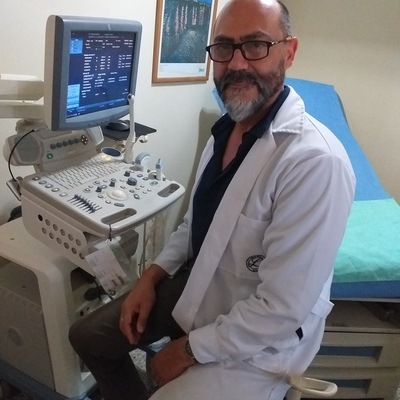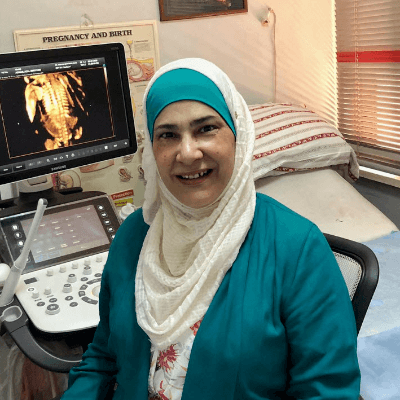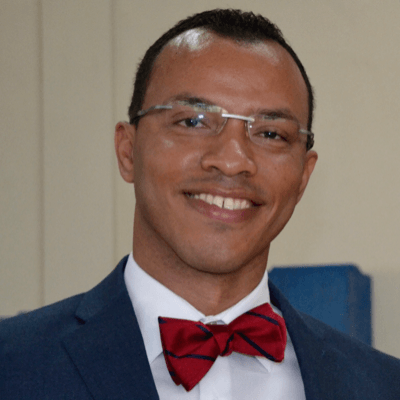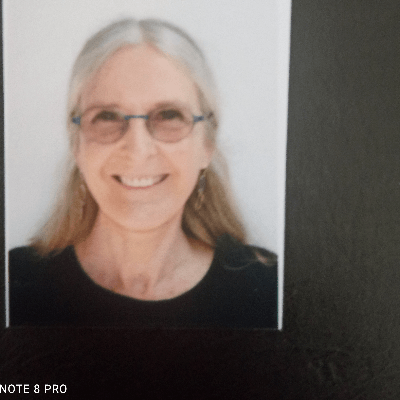We present a case of Conjoined Twins, omphalopagus type, with bilateral Limb Body Wall complex.
The following findings were identified on ultrasound:
-
Two fetuses without chorion nor amnion separating them indicating a Monochorionic, monoamniotic pregnancy. Both fetuses show hydrops fetalis (Video 1).
-
Fetus A examination:
-
Crown Rump Length measures 49mm with a caudal pole defect and hydrops (Image 1).
-
Complex caudal pole defect with large omphalocele containing bowel, liver, kidneys with bilateral pyelectasis and megacystis seen in axial (Video 2) and sagittal (Video 3) views. The lumbar spine seems incomplete.
-
Color doppler shows left-sided heart with normal axis. There may be an atrioventricular septal defect (ASVD), with anterograde flows in the ventricles and in the outflow tracts, but this is not certain (Video 4,5).
-
Axial view of kidneys with bilateral pyelectasis and of the distended bladder (Video 6). The kidneys seem hyperechoic, though this may be normal in the first trimester.
-
Fetus B examination
-
Crown Rump Length measures 63mm with a caudal pole defect and hydrops (Image 2).
-
Similar to Fetus A, we see a complex, large caudal pole defect with large omphalocele containing bowel, liver, kidneys with bilateral pyelectasis and megacystis (Video 7,8). The lumbar spine seems incomplete
-
Unlike fetus A, Fetus B's heart axis seems unusual though there are no other obvious cardiac defects (Video 9).
-
This is a focused video demonstrating the relationship between the heart and the omphalocele: the heart is located at the edge of the thorax. Also shown are both dilated kidneys (Video 10).
-
Overview axial scan from cranial to caudal, then backwards. Both have fetal hydrops, and the same large caudal pole defect (Video 11). There seems to be 2 distinct megacystis. Each fetus has 2 upper limbs. The lower limbs examination is difficult. Fetus B has one lower limb looking normal on the left side of the image. In the center, Fetus A's lower limbs and Fetus B;s other limb are in close contact
Our Prenatal Diagnosis based on ultrasound imaging was Conjoined Twins, Omphalopagus type, with Bilateral Limb Body Wall Complex. Although the fetuses were not adherent to the placenta, the umbilical cords seemed short and its insertion was difficult to find. Our differential diagnosis included OEIS complex (Omphalocele, bladder Extrophy, Imperforate anus, Spinal defect complex), however in this case, the megacystis was very well seen in both fetuses, supporting Limb Body Wall complex. In the case of a true bladder extrophy, such as in OEIS complex, the bladder is opened with the mucosa fully exposed. The bladder develops outwards and is not seen on ultrasound as a cystic image between the umbilical arteries as in our case.
We informed the patient of the poor prognosis due to fetal hydrops and complex defect. The patient chose medical abortion.
After abortion, pathological examination confirmed our prenatal diagnosis and revealed the following findings:
-
A single placenta, with two umbilical cords, inserted paracentrally and located within 1 cm from each other. There were single umbilical arteries. The cords were short and seemed to connect to the thin membrane of the large omphalocele shared by both fetuses.
-
Similar features for both fetuses included:
-
Normal skull and face, normal thorax with normal thymus, lungs and hearts, although the hearts and lungs were displaced caudally. Hearts could not be dissected due to their small size.
-
The Xray (Image 2) confirmed the lumbosacral spine defect as well as pelvic bone anomalies.
-
The large omphalocele contained bowel, liver, and kidneys (Image 3). The omphalocele membrane was ruptured, thus the megacystis was not seen as the bladder wall was likely ruptured as well (Image 4). Stomachs, pancreas, and spleens were not found. There was a bilateral imperforated anus. The external genitalia were missing.
-
Each fetus had 2 upper limbs and 2 lower limbs with normal morphology of each segment including fingers and toes. However the lower limbs were displaced due to the large omphalocele.










